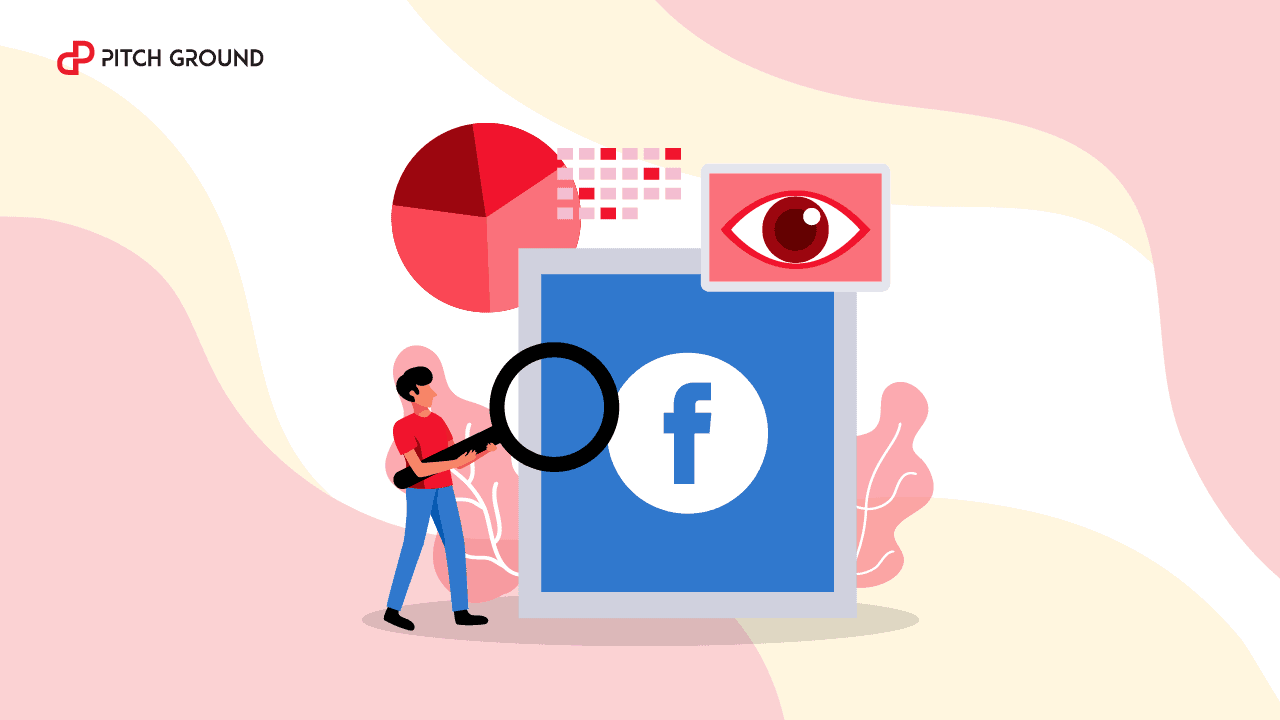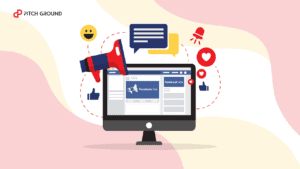I thought chatbots were hyped. Really.
I thought they were just buzzwords for a messaging app with buttons and workflows that were rigid but could automate some customer support tasks.
I was wrong.
They have lots of use cases and successful case studies for e-commerce sites and hospitality (hotels, restaurants, and so on).
Yet, they have great potential and are an unexplored Marketing channel in the B2B world.
SaaS companies, for instance, prefer tools like Drift, Hubspot, and Intercom as their options for web chats.
It’s understandable – some users may prefer to keep communication formal on email or an anonymous chat that only associates data when a form is filled.
However, I’d argue that some SaaS companies could leverage such a channel.
But, why, how, and when?
This article is meant to help you convince yourself (and your team) to use Facebook Messenger.
Should your SaaS use Facebook Messenger anyways?
- I think Facebook Messenger could be useful for your business if it matches these criteria:
- Your brand personality is friendly and fun; your business looks more like Asana and Monday than Oracle or Microsoft.
- Your business is low-touch or 100% self- service. If your business requires a sales representative or an extensive sales process, the main channels are cold calling and email.
- But if your business is like Envato or a collaboration software targeting individuals, instead of corporations, I’d try out Facebook Messenger.
- Your target audience is more likely to be found on social media and mobile.
If your business matches these criteria, here are some examples and use cases you may want to try. I have personally tried most of them.
I should also say that Facebook Messenger is so powerful that it can cover marketing, sales, and service—the entire sales process.
Facebook Messenger vs email open rates: leverage messaging as a subscription channel
Look at these email open rates:
And take a look at these Messenger open rates:
Why does Messenger marketing outperform emails?
You might argue that it’s all about the content you send — the more engaging, the better open rates, but no.
The format, context, and channel matters.
Unless your email list is hyper segmented, your open rates will have a hard time surpassing a threshold.
One possible reason is the law of the Shitty Click-Through rates, positing that all marketing channels burn out across time.
The first banner had a 78% Click Through Rate. Today, making more than 1% might be successful.
And that’s what happens with email marketing – over time; it’s effectiveness diminishes:
But, yet, this is not the case of Facebook Messenger.
It’s broadly adopted already as a personal communication channel, but, as for 2020, it remains an untapped channel as a business communication tool.
It also has a real-time, conversational component, which soars personalization and engagement.
A practical way I think of it is that people don’t like to fill forms, but they do like having chats. And with chatbots, an automated conversation becomes a more organic way to collect users’ data.
And that’s something Manychat, a leading Facebook Messenger chatbot builder gets well.
They have native integrations with Hubspot, Klaviyo, Active Campaign, and Mailchimp by being the way to collect leads data to be sent to these automation tools.
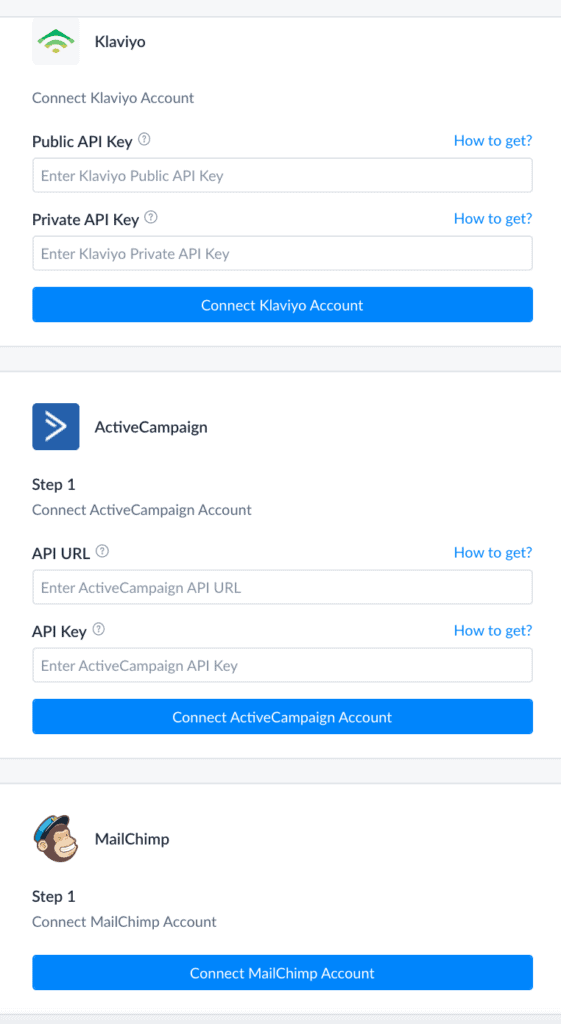
Automate customer support with real smart chatbots (almost free)
I know smart chatbots seem like hype, but they’re easy to implement (and they work great).
I worked for about six months in a customer support Facebook Messenger chatbot with an event that sells over 1 million tickets in more than ten cities—in a month.
There, automation wasn’t a nice-to-have but a need.
The good news is that I’m not a programmer but a marketer.
The technical skills I needed were learned in a few days.
I will quickly show you how a smart chatbot works and share with you the guides and tools I used.
After some time interacting with your customers, your support team has a clear idea of the most common questions people make about a product or service.
Each of these questions is intents. An intent is a specific question or purpose.
People, however, can ask the same question in different ways.
Some chat providers help to solve this by triggering messages based on keywords; if a sentence contains a keyword, they will assume user intent.
However, triggering only on keywords may be inaccurate, considering that people talk to bots as if they were humans.
With Natural Language Processing; instead, you can train an algorithm with a dataset of questions, people may have to address one specific intent.
For instance, if you want to train a bot to understand when someone asks for pricing, you could teach it with a dataset with the following questions.
- Tell me more about your plans.
- What is your pricing?
- How much do you charge for your product?
- Is your product expensive?
- How much is it?
- What are the costs?
- I want to know about prices.
And dozens of variations more.
In the beginning, you will want to come up with different ways people may ask such questions.
However, eventually, you will start training the algorithm with the actual questions people do whose intent you can interpret, so you assign it to the chatbot.
If you’re interested in knowing how to set up your smart chatbot with Messenger, we recommend this video tutorial:
Follow this step-by-step guide to get started with Manychat, DialogFlow, and Janis.
Offer chat templates as lead magnets.
Manychat is one of the fastest-growing startups nowadays. They are the perfect example of exponential growth.
One of their best features is the ability to build templates; you can create Messenger flows that you can share with anyone, and they need to copy and paste to set up yours.
So, if you’re a software company in the marketing or sales niche, you could reconsider your content strategy.
Instead of just writing blog posts, you could build things your audience would like to use.
Me for instance, I love to build dashboards templates with Google Data Studio, but also, Messenger flows a business may find useful and can save tons of time.
One great example is Janis, which created a Messenger chatbot template to automate restaurant deliveries by connecting Manychat and Google Sheets.
They offer all the templates to help a user upload all their items.

These items can be automatically fetched on Messenger and may look like this.

Templates are so great that Manychat highlights them across the app:
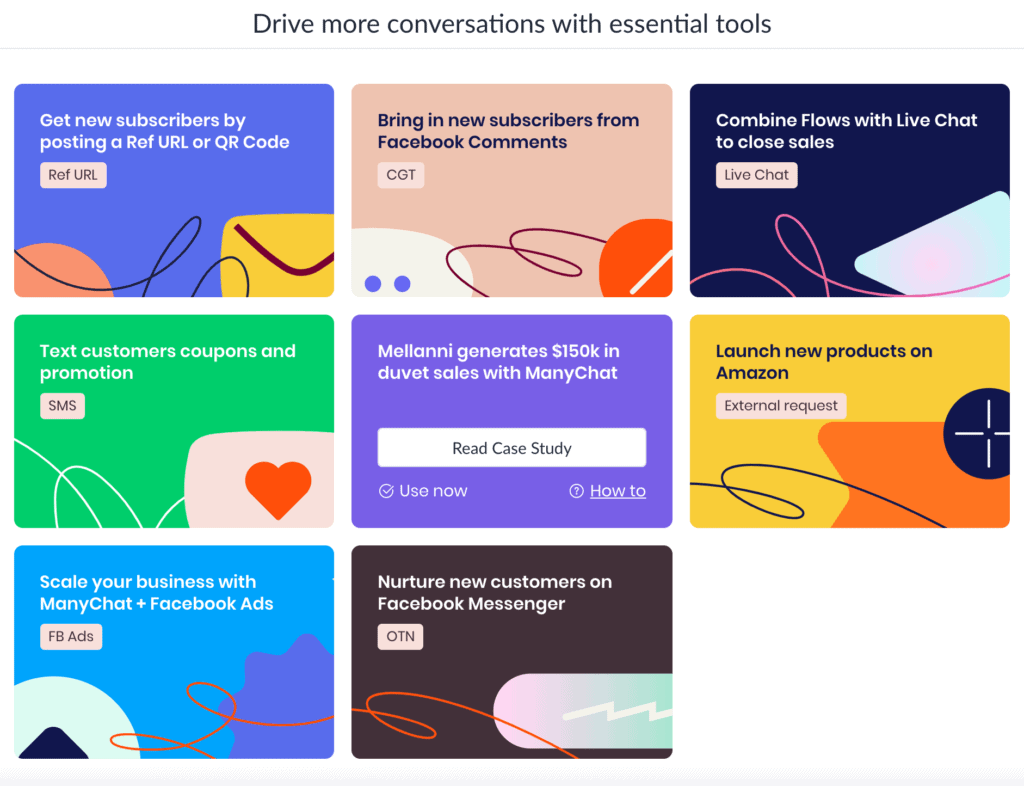
Product tours, MVPs, and onboarding—all with Messenger!
Explaining a software product is complicated sometimes, due to their abstraction.
It’s said that a Google Sheet (or Excel) is the main competitor for 90% of software.
It means that virtually all software is composed of forms, databases, and some formulas.
At its core features, some apps don’t seem like a big deal, but their positioning – their layout, automation, and interface, that shape use cases for specific purposes.
I mean, I may use Asana as a note keeper or a basic CRM; I could use Messenger as an Intranet tool; I use WordPress to write love notes for my partners.
It’s the same features but different use cases and users.
Messenger becomes handy because they can personalize a conversation with the user by merely having a conversation with something as simple as asking them their profile and traits.
Frictionless popups
I like popups. Thanks to them, I can feel I “generate contacts while sleeping.”
This is how a “successful” popup implementation looks like:
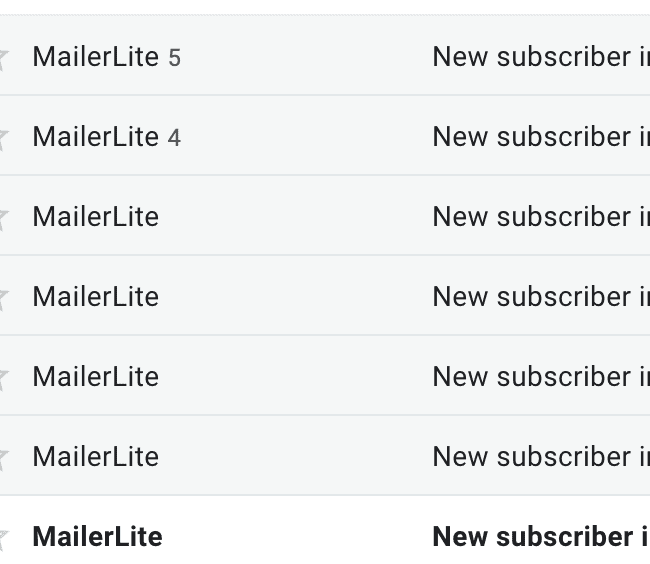
*Subscribers start pouring in.*
How does it work?
I target non-commercial-intent keywords that my desired audience would look for anyways.
The problem with these keywords is that they rarely represent a business opportunity – there’s no one submitting a form expressing interest in my product.
But how I could leverage such traffic opportunity?
I add contextual popups on blog articles that are gaining lots of traffic through SEO.
So, If I write about “sales promotion ideas,” I share a lead magnet through a popup with more examples of sales promotion.
I will share how other companies are nailing it if someone is browsing articles related to SaaS marketing.
The chances are that people who’re reading this content might like the lead magnet—rather than a generic “subscribe to our newsletter” offer.
But this is what happened when I stopped asking for emails and used a Manychat popup instead:

The click-through rate wasn’t better – 1% is low.
But the open rate and interaction were pretty impressive. Virtually everyone who clicked the popup turned into a subscriber.
To become a Messenger subscriber, a user only needs to start a conversation with you on Messenger; standard popups, on the other hand, require the excruciating task of submitting an email (which is associated with future spam).
I attempted to remove friction by switching from a form to a Messenger flow where users could interact with my content. And such little change seemed to work.
Messenger opens the door to omnichannel.
We’re told to build an audience by building an email list. But audiences come in different ways.
You can build a re-marketing audience with the people who interact with you on social media or visit your website.
You can have an audience of people who opt-in for push notifications like Product Hunt gets most of its traffic.
You can have a list of phone numbers to send SMS, which has impressive open rates.
And my favorite, you can have a closed Facebook group that haw way better organic reach than a Facebook page.
But also, you can have a Messenger audience.
Once people start a conversation, they become subscribers that you can keep reaching.
However, consider that Facebook Messenger has the 24+1 rule, which lets a brand have a commercial interaction with a user within 24 hours. But you can reactivate users by sending them the content of paying a sponsored broadcast.
As I suggested before, Messenger offers a conversational interface, which makes personalization and real-time interaction feasible.
Unlike other web chat platforms, Messenger turns out to be dynamic and resourceful; you can share carousels, GIFS, buttons with links to anywhere, videos, images, and more.
Such rich content—besides giving you a unique way to tell stories—help you connect with your Messenger subscribers in different channels.
Once they start a flow, you can ask for emails, phone numbers without them leaving the conversation, or send them to any website, blog post, or social media post. As such, Messenger becomes the path to encourage people to subscribe to multiple channels.
Manychat recently announced an integration with Zapier that lets you collect phone numbers and create SMS automation based on users’ behavior with Messenger flows.
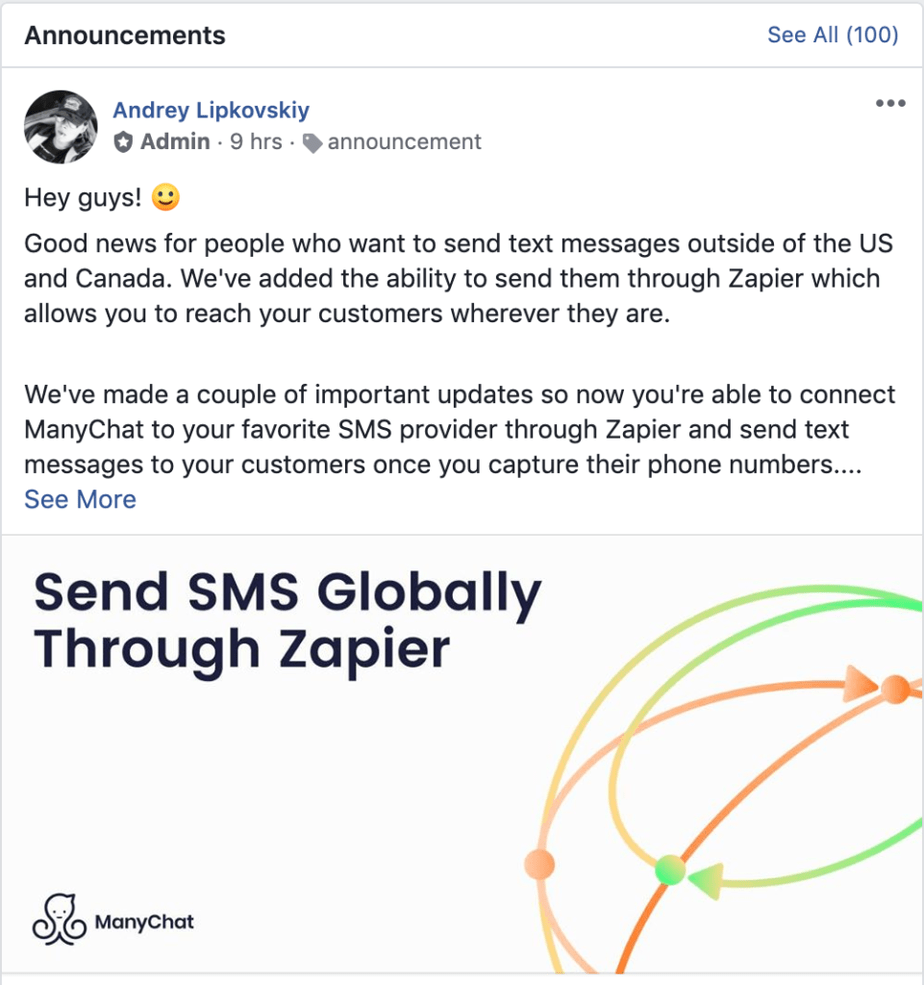
Automate and personalize feedback collection
You can enable Messenger as your website’s live chat and quickly set up automation.
A cool feature is that you can trigger a new flow after your chatbot gives a response.
A simple question might be, did the above answer your question?
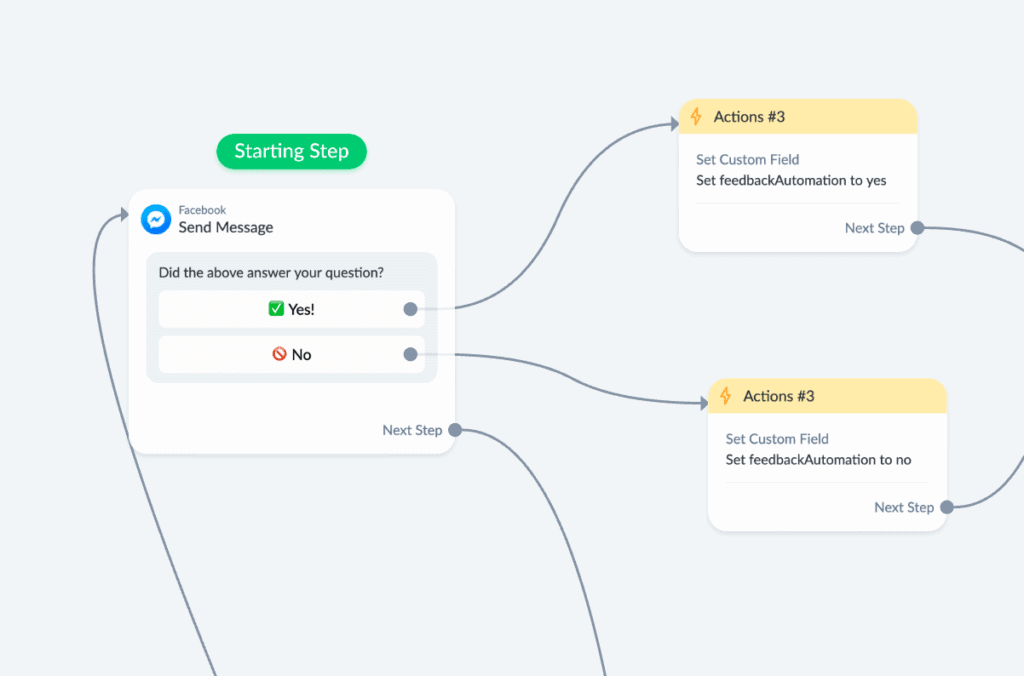
This is the case for LeadQuizzes, a leading provider backed by Neil Patel.
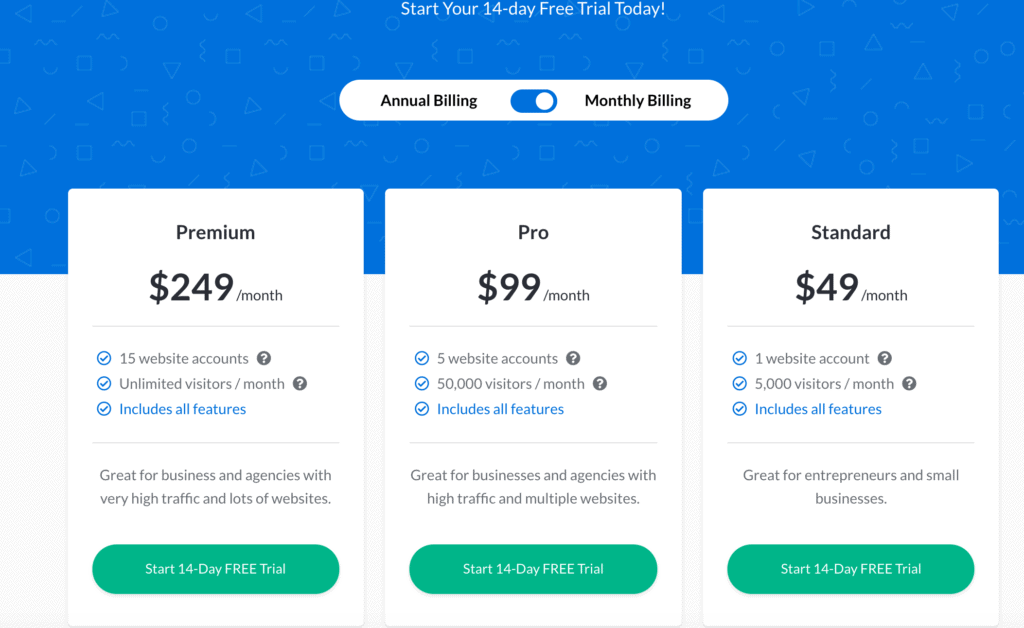
Meanwhile, you can find dozens of tutorials to create yours with Manychat:
Start conversations from Facebook Live
This is one of the most impressive features available:
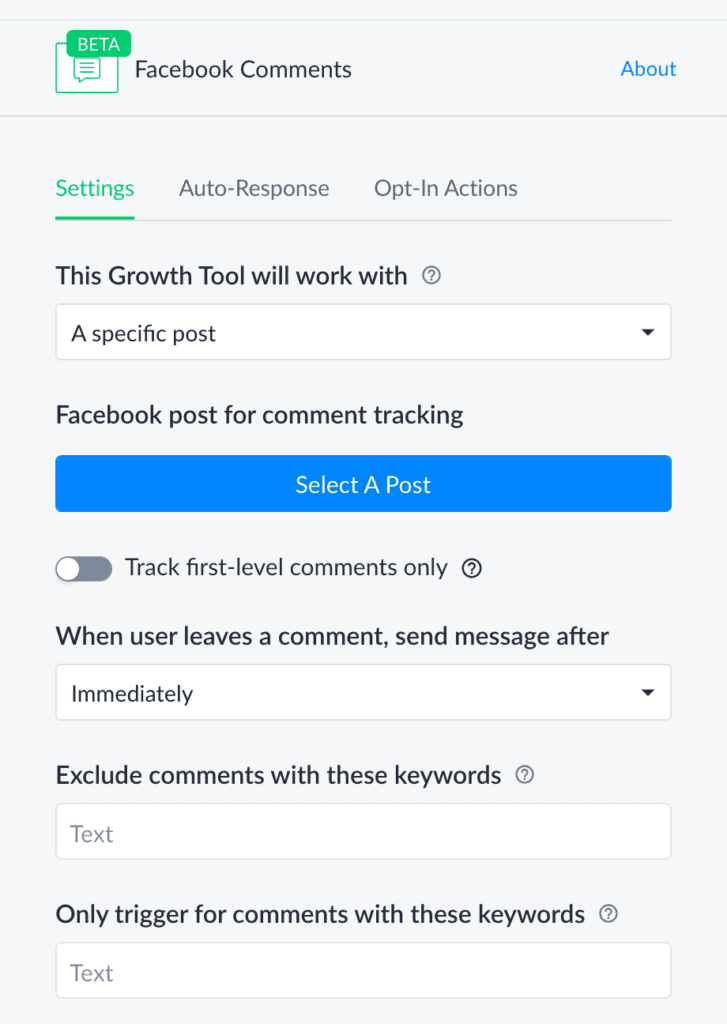
You can trigger a new conversation if someone comments on your posts, and you can personalize the triggered message based on keywords.
Now, imagine if you run Facebook Live frequently, and people interact with you on comments.
The messenger would be a great way to collect those who comment as subscribers to whom you can keep pushing content and offers.
If well done, it can be a frictionless experience to get subscribers without requiring people to leave Facebook to visit a landing page.
Here’s how you can set it up.
Since you’re here
We’re publishing new content and free tools every week to help your digital business grow. Would you like to see more?
